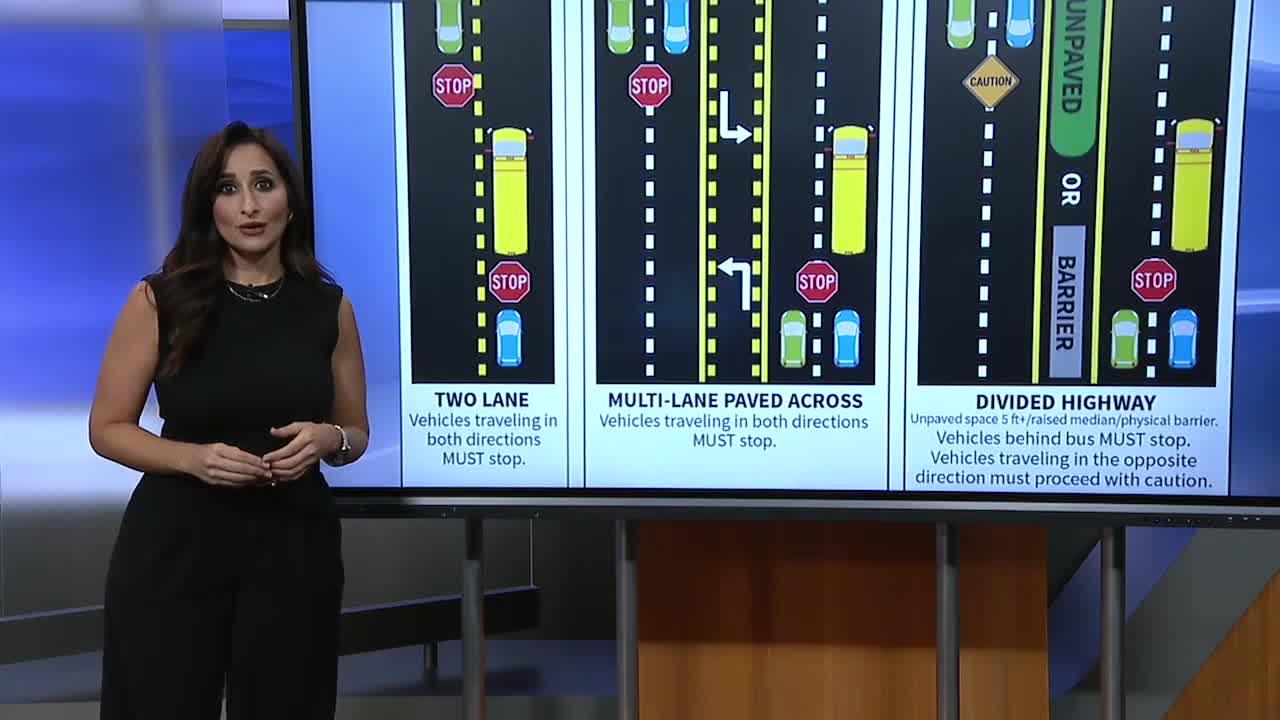TAMPA, Fla. — School is back in session and buses are back on the roads, which means taking extra caution on the streets and watching out for children heading back to class.
School bus safety: When to stop and when to go when a school bus stop arm is out
Florida Highway Safety and Motor Vehicles has a diagram showing different roads and whether drivers need to stop or can go with caution:

- All drivers moving in either direction on a two-way street must stop for a school bus displaying a stop signal, and must remain stopped until the road is clear of children AND the school bus stop arm is withdrawn. (see diagram, TWO-LANE)
- On a highway divided by a paved median, all drivers moving in either direction must stop for a school bus displaying a stop signal, and must remain stopped until the road is clear of children AND the school bus stop arm is withdrawn. (see diagram, MULTI-LANE)
- The only time traffic approaching an oncoming school bus does not need to stop, is if there is a raised barrier such as a concrete divider or at least five feet of unpaved space separating the lanes of traffic. (see diagram, DIVIDED HIGHWAY)
- On a highway divided by a raised barrier or an unpaved median at least 5 feet wide, drivers moving in the opposite direction do not have to stop for the bus (painted lines or pavement markings are not considered barriers). However, these motorists should slow down and watch for students loading or unloading from the bus. (see diagram, DIVIDED HIGHWAY)
Several Florida counties have stop arm cameras, including Hillsborough and Polk Counties, and could cost drivers $225 if they are issued a citation.
RELATED: School bus camera appeals will soon start rolling like the cameras are
RELATED: Impact Check: More than 61,000 drivers ticketed for illegally passing stopped school buses
Other tips for drivers:
- Be alert and watch for children at all times, but especially near schools,bus stops, school buses, and in school parking lots.
- Obey all traffic laws and speed limits, paying extra attention to the lower speed limits in school zones.
- Do not pass other vehicles in school zones or at crosswalks. Do not change lanes or make U-turns in school zones.
- Watch for and obey signals from school crossing guards.
- Do not text or use a cell phone while driving.
- Only drive or park in authorized areas to drop off or pick up children at school.

Near record-breaking cold spell
As cold weather shelters open across the Tampa Bay area, Tampa Bay 28 Meteorologist Greg Dee breaks down what to expect from this cold front




